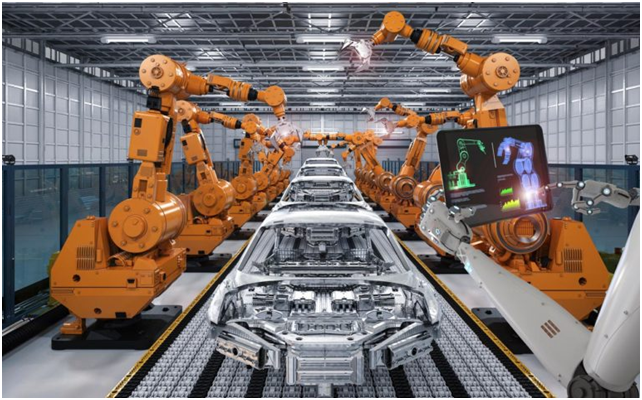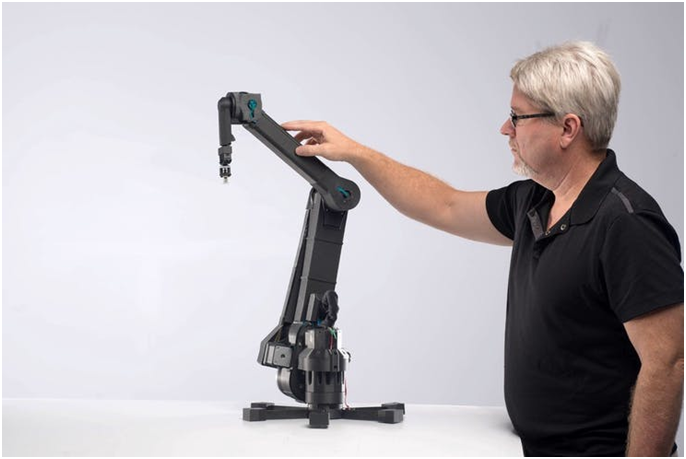
Social distancing guidelines, separating workers by 6 feet, requires plant re-engineering with fewer workers on the plant floor. Since the work still has to get done, the solution is integrating more cobots or collaborative robots. Traditionally the 3D printing industry’s driving robot purchases were Dirty, Dull, and Dangerous. The new 4th “D” is “Distance.”
Examples of leading robot manufacturers using 3D printing are:
Kuka
In addition to applying 3D printing processes to the design and production of their robots, Kuka has published content, including videos, illustrating how 3D printing metal can provide complex geometries and large profile components.
Haddington Dynamics

Dexter has a wide variety of end-use applications. Along with a field-programmable gate array (FPGA) supercomputer and combination of open-source hardware and software, the completely 3D printed Dexter can be used in multiple applications, including 3D printing, pick and place, gripping, painting, gluing, printed circuit board assembly, and even CNC uses. Its durability and versatility both play an integral part in its functioning.
Markforged
Markforged printers are used to make a wide range of Robot End-of-Arm Tooling (EAoT). EAoT is essentially the “hand” of the robot with a which can range from grippers to suction cups to welding torches.
New and improved 3D printing robot components and advances in technology can be supported by R&D tax credits.
The Research & Development Tax Credit
Enacted in 1981, the now permanent Federal Research and Development (R&D) Tax Credit allows a credit that typically ranges from 4%-7% of eligible spending for new and improved products and processes. Qualified research must meet the following four criteria:
- Must be technological in nature
- Must be a component of the taxpayer’s business
- Must represent R&D in the experimental sense and generally includes all such costs related to the development or improvement of a product or process
- Must eliminate uncertainty through a process of experimentation that considers one or more alternatives
Eligible costs include US employee wages, cost of supplies consumed in the R&D process, cost of pre-production testing, US contract research expenses, and certain costs associated with developing a patent.
On December 18, 2015, President Obama signed the PATH Act, making the R&D Tax Credit permanent. Beginning in 2016, the R&D credit has been used to offset Alternative Minimum Tax for companies with revenue below $50MM, and startup businesses can obtain up to $250,000 per year in cash rebates applied directly toward payroll taxes.
Conclusion
Robot manufacturing is one of the highest business growth opportunities in the foreseeable future. The 3D printing and robotics industries are going to continue to be long-term partners.
